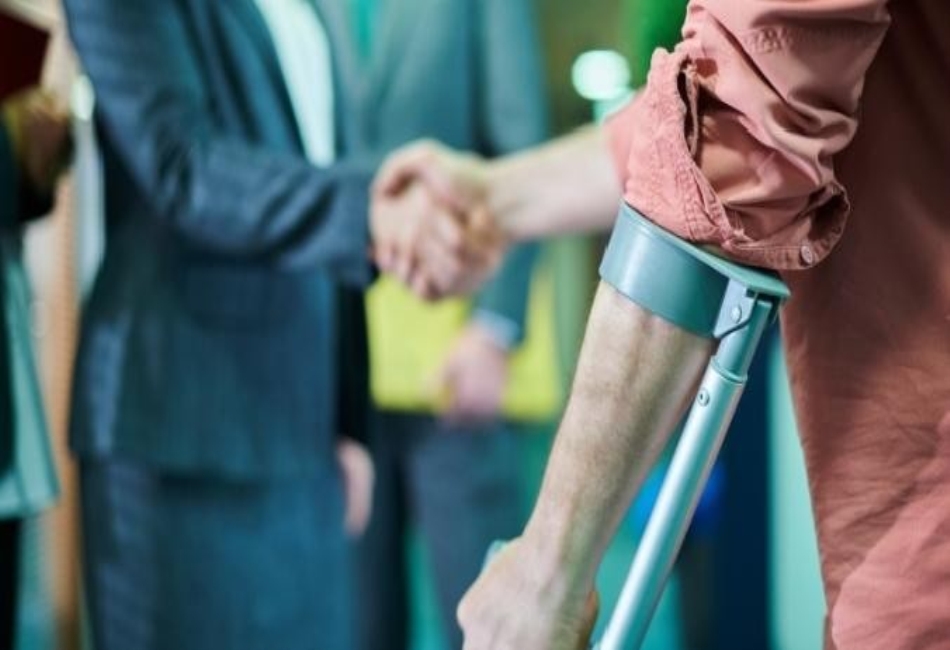Personal injuries can happen anywhere and affect anyone, often when you least expect them. Whether you’re walking through a grocery store, driving to work, or receiving medical care, accidents resulting from someone else’s negligence can change your life instantly. Understanding different injury categories helps victims recognize when they have legal rights and potential compensation options. Each type carries unique challenges, evidence requirements, and legal considerations that can significantly impact your recovery outcomes.
1. Motor Vehicle Accident Injuries – The Most Common Personal Injury Cases
Traffic accidents remain the leading source of personal injury claims across Virginia, creating complex legal scenarios that require immediate attention. These cases often involve multiple parties, insurance companies, and varying degrees of fault that can complicate compensation efforts.
In 2023, falls resulted in over 8 million trips to the emergency room, making them the leading cause of ER visits, accounting for 21.3% of all visits.While falls dominate ER statistics, vehicle crashes create the most severe injury patterns requiring long-term legal support.
When serious back injuries occur in vehicle accidents, victims can benefit from the expertise of back injury attorneys, who understand the intricate medical evaluations and long-term care costs that these cases demand. These legal professionals coordinate with orthopedic specialists and rehabilitation experts to ensure your injuries are thoroughly documented.
Rear-End Collisions and Spinal Trauma
Many cases resulting from rear-end crashes, especially those causing spinal injuries, are handled by a Norfolk back injury lawyer with experience addressing the transfer of force through the victim’s spine. These impacts can create herniated discs, compressed vertebrae, and soft tissue damage that doesn’t always appear immediately after the accident.
The delayed onset of symptoms makes these cases challenging. What feels like minor soreness can develop into chronic pain requiring surgical intervention weeks later.
Intersection Accidents and Severe Injuries
T-bone collisions at intersections often result in the most catastrophic injuries. These side-impact crashes frequently cause traumatic brain injuries, multiple fractures, and spinal cord damage that can permanently alter victims’ lives.
Determining fault in intersection accidents requires thorough accident reconstruction and witness testimony to establish which driver violated traffic laws.
Commercial Vehicle Incidents
Truck accidents create particularly complex legal scenarios due to federal regulations governing commercial drivers. These cases often involve multiple liable parties, including trucking companies, maintenance contractors, and cargo loaders.
The size differential between commercial vehicles and passenger cars typically results in severe injuries requiring extensive medical treatment and rehabilitation services.
2. Medical Malpractice Injuries – When Healthcare Goes Wrong
Medical professionals hold a special position of trust, making malpractice cases particularly devastating for victims and families. These complex claims require extensive medical expertise and detailed documentation to prove negligence standards were breached.
Virginia’s medical malpractice laws include specific notice requirements and damage caps that can significantly impact your case’s value and timeline.
Surgical Errors and Hospital Negligence
Wrong-site surgeries, anesthesia complications, and post-operative infections represent serious breaches of medical standards. Hospital-acquired infections and medication errors can transform routine procedures into life-threatening situations requiring additional surgeries and extended recovery periods.
According to a National Library of Medicine study, some experts estimate the total cost of medical errors to be $20 billion a year. Others estimate that hospital-acquired infections alone cost between $35.7 to $45 billion annually.
Misdiagnosis and Delayed Treatment
Cancer misdiagnosis cases often result in the most tragic outcomes, as delayed treatment can eliminate cure opportunities. Emergency room errors, particularly heart attack and stroke misdiagnoses, can have immediate life-threatening consequences.
These cases require extensive medical record analysis and expert testimony to establish how proper diagnosis would have changed treatment outcomes.
Birth Injuries and Obstetric Malpractice
Cerebral palsy, shoulder dystocia, and other birth injuries can result from negligent prenatal care or delivery room errors. These cases often involve lifetime care costs reaching millions of dollars for severely affected children.
Proving obstetric malpractice requires detailed analysis of fetal monitoring strips and delivery room procedures to identify deviations from accepted medical standards. You will need the help of birth injury lawyers to navigate the legal process.
3. Slip and Fall Injuries – Proving Negligence in Premises Cases
Property owners have legal obligations to maintain safe conditions for visitors, but proving negligence in slip and fall cases can be challenging. These incidents frequently occur in retail stores, restaurants, and office buildings where hazardous conditions develop quickly.
Virginia’s premises liability laws require victims to prove property owners knew or should have known about dangerous conditions before accidents occurred.
Commercial Property Accidents
Wet floors, uneven surfaces, and inadequate lighting create common hazards in shopping centers and restaurants. Security camera footage often provides crucial evidence, but obtaining these recordings requires quick action before they’re automatically deleted.
Store managers’ incident reports and employee witness statements can provide valuable evidence of notice regarding hazardous conditions.
Residential Property Incidents
Landlord liability cases often involve broken handrails, defective lighting, or unsafe walkways that create hazardous conditions for tenants. Swimming pool accidents can result in drowning or serious diving injuries when proper safety measures aren’t maintained.
Ice and snow removal responsibilities vary depending on lease agreements and local ordinances governing property maintenance obligations.
Government Property Claims
Sidewalk defects, park maintenance failures, and public building hazards create unique challenges due to sovereign immunity protections. These claims often require specific notice procedures and shorter filing deadlines than typical personal injury cases.
Proving municipal negligence requires demonstrating that government entities had actual notice of dangerous conditions and reasonable time to address them.
4. Workplace Injuries – Beyond Traditional Workers’ Compensation
Workplace accidents don’t always fall under workers’ compensation coverage, particularly when third-party negligence contributes to injuries. Construction sites, manufacturing facilities, and office environments each present unique hazards requiring different legal approaches.
Understanding when you can pursue claims beyond workers’ comp benefits is crucial for maximizing your recovery potential.
Construction Site Accidents
At construction sites where falls from heights, equipment malfunctions, and electrocution injuries occur, consulting a Virginia Beach spinal injury attorney can be vital to determine whether equipment manufacturers or general contractors have liability beyond standard workers’ compensation coverage.
Third-party claims against equipment manufacturers or property owners often provide significantly higher compensation than workers’ comp benefits alone.
Repetitive Stress Injuries
In situations involving carpal tunnel syndrome, back strain, and other ergonomic injuries that develop gradually from repetitive motions or poor workplace design, a Norfolk herniated disc lawyer can assist in evaluating whether your employer’s negligence in providing proper equipment or training played a role in the progression of your condition.
These cases often require extensive medical documentation linking workplace activities to your injury’s progression and severity.
Workplace Violence Incidents
Inadequate security measures can result in workplace assaults, particularly in retail, healthcare, and hospitality environments. Employers have obligations to provide reasonably safe work environments, including protecting employees from foreseeable criminal acts.
PTSD and other mental health impacts from workplace violence can be compensable when employer negligence contributes to the incident’s occurrence.
5. Understanding Your Legal Options and Next Steps
Personal injury cases involve complex legal procedures, evidence requirements, and negotiation strategies that can significantly impact your compensation. Working with experienced attorneys helps ensure you don’t miss critical deadlines or accept inadequate settlement offers from insurance companies.
Virginia’s contributory negligence laws can completely bar recovery if you’re found partially at fault, making professional legal guidance essential for protecting your rights.
Immediate Actions After Any Injury
As you recover from any accident or injury, seeking guidance from a Virginia Beach lower back accident lawyer can be extremely helpful for understanding proper evidence preservation requirements, while you focus on your medical treatment and recovery.
Working with Personal Injury Attorneys
If you are facing the complexities of a back trauma injury caused by negligence, enlisting the knowledge of a Norfolk back trauma injury lawyer brings specialized understanding of medical terminology, insurance negotiation tactics, and courtroom procedures, all of which can have a significant impact on the outcome of your case.
Understanding Compensation Types
Economic damages include medical expenses, lost wages, and property damage that can be precisely calculated from bills and records. Non-economic damages like pain and suffering require more subjective evaluation based on injury severity and life impact.
Virginia law caps non-economic damages in medical malpractice cases but doesn’t limit compensation in other personal injury types, making case evaluation crucial for understanding realistic expectations.
Common Questions About Personal Injury Claims
1. Which of the following is a type of personal injury?
Common types of personal injuries include medical malpractice, motor vehicle accidents, product liability, and slip and fall accidents affecting victims daily.
2.What is an example of a personal injury?
Car crashes, slip and falls, and workplace injuries are all common personal injury cases requiring different legal approaches and evidence standards.
3. How long do I have to file a personal injury claim in Virginia?
Virginia’s statute of limitations is generally two years from the injury date, though exceptions exist for certain circumstances.
Final Thoughts on Personal Injury Awareness
Understanding these six injury categories helps victims recognize when they have valid legal claims and potential compensation opportunities. Each type presents unique challenges requiring specialized knowledge of medical issues, liability standards, and insurance company tactics. Don’t let complex legal procedures or aggressive insurance adjusters discourage you from pursuing the compensation you deserve. Your recovery matters, and experienced attorneys can help you navigate these challenging situations while you focus on healing.



